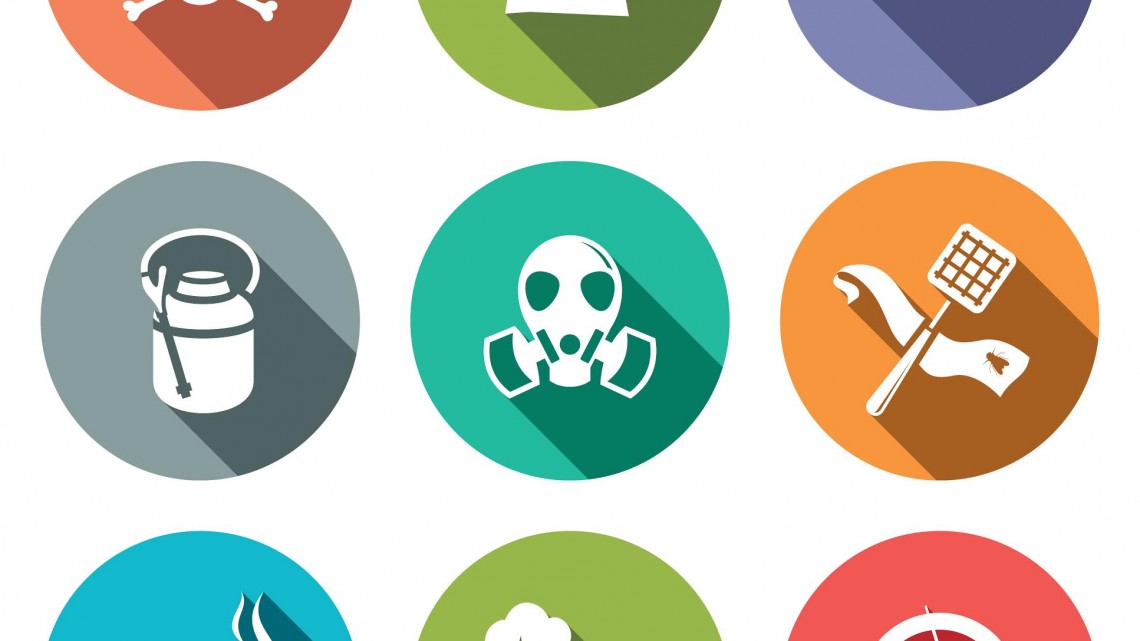What Are Carcinogens?
Carcinogens are substances or agents that are capable of producing cancer in living organisms. Cancer is a term used for disease in which there is uncontrolled division of abnormal cells in the body. These cells often invade other tissue via the blood and lymph systems. There are more than 100 types of cancer.
Cancers begin at the cellular level, when deoxyribonucleic acid (DNA) becomes damaged or mutated. Some changes in cells may be inherited, while others may be due to environmental factors, such as exposure to tobacco, radiation, ultraviolet light, hormones, drugs that suppress the immune system, toxic chemicals in the home or workplace, or pollution in the air.
While not all carcinogens affect DNA directly and may not cause cancer in every case, they have the potential to do so. Some of these may be cancer causing only after prolonged or very high levels of exposure; the risk of developing cancer depends on a variety of factors, including an individual’s genetic makeup. Limiting exposure to toxic agents is certainly the best place to start in protecting yourself and your loved ones.
The Price of Convenience
Our homes are filled with man-made substances that can be toxic to us on a cellular level. Many of the items we use each day can introduce harmful chemicals into our bodies:
The furniture we sit on, for example, may contain Polybrominated Diphenyl Ethers (PBDEs), flame retardants used extensively in both consumer and industrial products.5 Products containing this chemical include polyurethane foam in furniture and mattresses (treated with penta-BDE) as well as plastic and electronics.11 Research shows that PBDEs are found everywhere in the environment, including the air, dust, soil, and in our food. These chemicals have been found in human fat tissue, as well as in blood serum, breast tissue, and milk of lactating women.5,6 PBDEs do cross the placenta, resulting in exposure to the developing fetus.7
Alkylphenols are chemicals used in detergents and other cleaning products. These chemical can also be found in personal care products (especially those for the hair, such as dyes) and are even an active ingredient in many spermicides. Alkylphenol Ethoxylates (APEs) are also found in pesticides, and lubricants. The most common APEs are nonylphenol ethoxylates. This chemical has a bioaccumulative effect: it tends to build up in the tissues over time. This chemical like many others is an endocrine disrupter; endocrine disrupters can interfere with the hormone system in mammals. Such disruptions can lead to cancerous tumors, birth defects, and other developmental disorders.10
Household pesticides, herbicides, and other pest-killing poisons (including flea and tick products) have been identified as human or animal carcinogens. Dichlorvos (DDVP), a common chemical in pesticides, has been shown to be a cancer causing agent in both animals and humans: In humans DDVP has been linked to childhood brain cancer and leukemia, non-Hodgkin’s lymphoma, and breast cancer. These and other pesticides are endocrine disrupters that cause changes to DNA that can decrease activity of cancer suppressing genes.9 Other common pesticide agents:
• Organochlorine pesticides: DDT, DDE, Chlordane, Heptachlor, Dieldrin, Methoxane
• Organophosphate pesticides: Diazinon, Chlorpyrifos
• Triazine herbicides: Atrazine, Simazine, Cyanazine
• Chlorophenoxy herbicides: 2,4-D, 2,4,5-T, Agent Orange
Cookware coated with non-stick compounds use a chemical called Perfluorooactanoic Acid (PFOA). PFOA is found in Teflon® and Gore-tex® as well as in other products around the home, including carpet and furniture protectants. Studies have found that higher blood serum levels of PFOA and other compounds were associated with an increased incidence of breast cancer.3 PFOA also has an effect on unborn babies. In a separate study of umbilical cord blood samples from newborn infants in Baltimore, 100% of the sample had measurable levels of PFOA.1 Higher levels of PFOA in cord blood was associated with both lower birth weight and smaller size.2
Some of the foods we eat are infused with chemicals call heterocyclic amines (HCAs) and polycyclic aromatic hydrocarbons (PAHs). This results when we grill beef, pork, poultry, or fish using high-temperature methods, such as pan frying or grilling directly over an open flame. Aromatic amines are also found as byproducts of the manufacturing of compounds such as polyurethane foams, dyes, pesticides, pharmaceuticals and semiconductors. Environmental pollution from diesel exhaust, combustion of wood chips and rubber, or tobacco smoke are also sources of these chemicals.4
Common metals in our home environment can be toxic as well. Batteries that are rechargeable contain a metal called until recently was widely used in the manufacture of pigments, metal coatings and plastics. It is a chemical that has been linked to early puberty and is a known risk factor for breast cancer. Lead is another metal that can be found in old paint and household pipes. In women with breast cancer, there were higher accumulations of metals like lead, mercury, iron, nickel, chromium, and zinc compared to biopsies taken from women without breast cancer.4
Below is a list of some of the most commonly found cancer causing products found in most homes:
Air fresheners: Often contain napthelene and formaldehyde
Art supplies: Epoxy and rubber cement glues, acrylic paints and solvents, and permanent markers often contain carcinogens. The list below may be helpful in deciding what to store outside if greener alternatives aren’t available:
• Lead in ceramic glazes, stained-glass materials, and many pigments.
• Cadmium in silver solders, pigments, ceramic glazes, and fluxes.
• Chromium in paint pigment and ceramic colors.
• Manganese dioxide in ceramic colors and some brown oil and acrylic paint pigments.
• Cobalt in some blue oil and acrylic paint pigments.
• Formaldehyde as a preservative in many acrylic paints and photographic products.
• Aromatic hydrocarbons in paint and varnish removers, aerosol sprays, permanent markers, etc.
• Chlorinated hydrocarbons (as solvents) in ink, varnish and paint removers, rubber cement, aerosol sprays.
• Petroleum distillates (as solvents) in paint and rubber cement thinners, spray adhesives, silk-screen inks.
• Glycol ethers and acetates in photography products, lacquer thinners, paints, and aerosol sprays.
Paints and varnishes: Always chose low- or no-VOC finishes.
Candles: Avoid paraffin candles that produce combustion by-products, including soot is a good idea. An occasional candle won’t harm you, but burning several of these in an unventilated room can. Scientists suggest using beeswax or soy.
Dry-cleaning: Choose clothes that don’t need perchlorethylene to clean them as the EPA officially identified it as a likely human carcinogen.
Flea, tick and lice control: Avoid lindane-based pesticides in these products. A recent report showed how tetrachlorvinphos (TCVP) and propoxur, used on national brands of flea collars, were unsafe for your pet as well as for toddlers and children who pet them and then put their hands in their mouths. TCVP belongs to the class of nerve-damaging chemicals known as organophosphates, a highly toxic chemical, and Propoxur belongs to a class of chemicals called carbamates, which also causes nerve damage. This particular chemical is on California’s Proposition 65 list of chemicals known to cause cancer.
Kitchen plastic in microwaves: Never microwave or heat food in a plastic container unless it is clearly marked “microwave safe” and intended for that purpose.
Cancer causing foods: http://blog.petflow.com/cancer-causing-foods/
Other Home Hazards:
References
1. Apelberg, B. J., Goldman, L. R., Calafat, A. M., Herbstman, J. B., Kuklenyik, Z., Heidler, J., … Witter, F. R. (2007). Determinants of fetal exposure to polyfluoroalkyl compounds in Baltimore, Maryland. Environmental Science Technology, 41(11), 3891–3897.
2. Apelberg, B. J., Witter, F. R., Herbstman, J. B., Calafat, A. M., Halden, R. U., Needham, L. L., & Goldman, L. R. (2007). Cord serum concentrations of perfluorooctane sulfonate (PFOS) and perfluorooctanoate (PFOA) in relation to weight and size at birth. Environmental Health Perspectives, 115(11), 1670–1676.
3. Bonefeld-Jorgensen, E.C., Long, M., Bossi, R., Ayotte, P., Asmund, G., Krüger, T., … Dewailly, E. (2011). Perfluorinated compounds are related to breast cancer risk in Greenlandic Inuit: A case control study. Environmental Health-Global, 10(1).
4. Breast Cancer Fund. (2015). Chemicals in household products. http://www.breastcancerfund.org/clear-science/environmental-breast-cancer-links/household-products/
5. Costa, L., Giordano, G., Tagliaferri, S., Caglieri, A., & Mutti, A. (2008). Polybrominated diphenyl ether (PBDE) flame retardants: Environmental contamination, human body burden and potential adverse health effects. ACTA Biomedica, 79, 172–183.
6. Darnerud, P., Eriksen, G., Johannesson, T., Larsen, P., & Viluksela, M. (2001). Polybrominated diphenyl ethers: Occurrence, dietary exposure and toxicology. Environmental Health Perspectives, 109, 49–68.
7. Frederiksen, M., Thomsen, C., Froshaug, M., Vorkamp, K., Thomsen, M., Becher, G., & Knudsen, L. (2010). Polybrominated diphenyl ethers in paired samples of maternal and umbilical cord blood plasma and associations with house dust in a Danish cohort. International Journal of Hygiene and Environmental Health, 13, 233–242.
8. Gray, J.M. (2010). Pesticides and herbicides: Environmental risks and breast cancer. http://erbc.vassar.edu/erbc/environmentalrisks/inthehome/index.html
9. Lawenda, B.D. (2013). Pesticides, herbicides and cancer: The link is getting clearer. http://www.integrativeoncology-essentials.com/2013/03/pesticides-herbicides-and-cancer/#sthash.HBrwl4fK.dpuf
10. National Institute of Environmental Health Sciences. (2015). Endocrine disruptors. http://www.niehs.nih.gov/health/topics/agents/endocrine/
11. Zota, A.R., Rudel, R.A., Morello-Frosch, R.A., & Brody, J.G. (2008). Elevated house dust and serum concentrations of PBDEs in California: Unintended consequences of furniture flammability standards? Environmental Science Technology, 42(21), 8158–8164.





No Comment